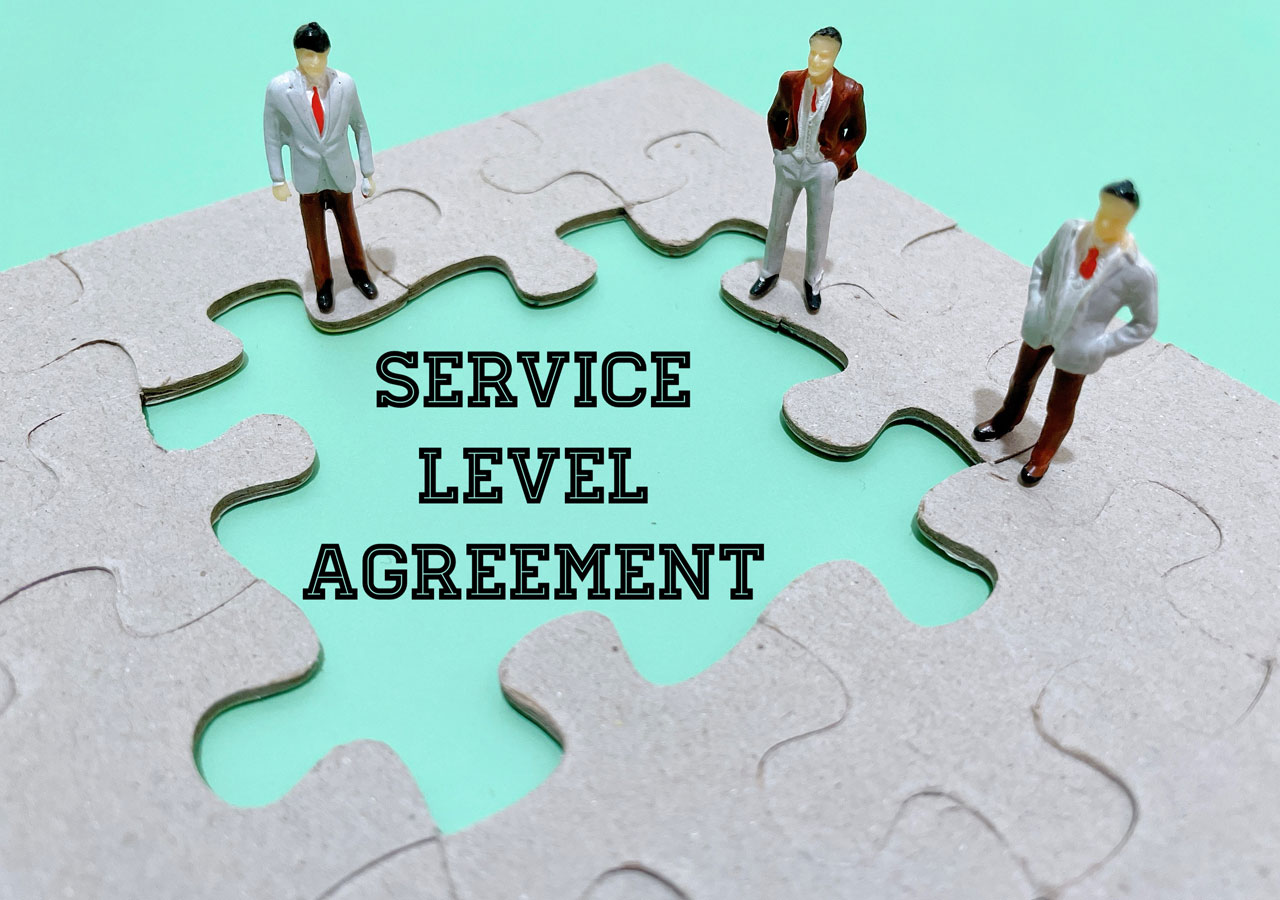Service-level agreements (SLA) are contracts between two parties where they agree upon certain terms and conditions. They are usually used in the context of cloud computing, but they also apply to other services such as web hosting or software development.
SLAs are becoming more common in today’s modern business environment. In fact, they are often used to ensure that companies meet their service level commitments. For example, if you sign up for a new web hosting package from a company, you should expect them to provide the promised uptime guarantee.
This guide will explain the basics of SLAs and how they can benefit your business.
What is an SLA?
An SLA is a contract between two parties that specifies what each party must do if there is a problem with the service. It includes specific details about when the service is expected to be available, how it will be maintained, and what happens if it isn’t.
For example, let’s say you’re using Amazon Web Services (AWS) for your website. You’ve signed up for a basic plan which offers 1 GB of storage space. The agreement states that AWS will maintain 99.9% availability on this service. If you don’t receive that level of performance, then you have the right to terminate the contract.
You may not realize that most businesses use some form of cloud computing. This means that they outsource many of their IT needs to third-party providers. These companies offer different levels of service depending on the type of product or service being provided.
In addition to providing the service itself, these companies often sell additional products such as managed security services or backup solutions. When you purchase one of these packages, you’ll likely enter into an SLA with the vendor.
You may think that these agreements aren’t necessary because you’re already outsourcing your IT needs to someone else. However, even though you may trust the provider, you still need to know exactly what you’re getting yourself into. An SLA gives you the power to cancel the contract at any time without penalty.
Why Use SLAs?
There are several reasons why you would want to use an SLA. First, you may want to avoid having to pay penalties for downtime. Second, you might want to make sure that you get the best possible service. Finally, you may want to protect yourself against potential problems down the road.
If you decide to use an SLA, you’ll probably want to choose a reputable company. After all, you wouldn’t want to risk finding yourself locked into a bad deal. You also shouldn’t sign up for an SLA unless you understand exactly what you’re agreeing to.
How Does an SLA Work?
When you sign up for an SLM, you’ll typically fill out a short questionnaire that asks questions like:
• What kind of service are you offering?
• Do you offer 24/7 support?
• Are you willing to provide a refund if the service doesn’t work properly?
Once you complete the questionnaire, the provider will send you a copy of the SLA. This document contains all of the information you need to know before signing up for the service.
It lists everything that you agreed to during the initial interview. It also contains detailed descriptions of the service and its maintenance schedule. Finally, it outlines the consequences of failing to perform according to the terms of the agreement.
What Kinds of SLAs Exist?
An SLA can take many forms. For instance, some vendors only require that you agree to certain conditions in order to qualify for the service. Others will allow you to select from a list of options. Still others will give you the opportunity to customize the terms of the agreement to fit your exact requirements.
Some vendors will charge extra fees for adding new features to the service. Other vendors will waive those fees if you agree to add more resources to the service. Some vendors will charge extra fees if you exceed the limits of the service.
Regardless of the specifics, every SLA should include the following elements:
• A description of the service
• The amount of money you’re paying for the service
• Your rights under the agreement
• How long the service is expected to last
• What happens when the service fails
• Who’s responsible for maintaining the service
• What happens if you don’t comply with the terms of the agreement
• What happens if the vendor stops performing
• What happens if there are unexpected costs associated with the service
• What you can do about any problems
• How you can contact the vendor
• How to terminate the agreement
• How much notice you have to give the vendor
• Whether you must pay penalties if you fail to meet performance expectations
• Any other important details
You should always read through the entire SLA carefully before signing up for the services. If you spot anything that seems odd or unfair, you should ask the vendor to explain it to you. Don’t be afraid to question the vendor if something doesn’t seem right.
Why Should I Use an SLA?
There are several reasons why you might want to use an SLM. First, you might want to avoid having to spend money on additional charges if your website goes offline. Second, you might not want to put yourself at risk by using a service that isn’t reliable. Third, you might want to ensure that you receive the best possible service. Fourth, you might want to make sure that you get the most out of your investment in the service.
How Can You Verify That the Provider Will Perform as Promised?
Unfortunately, there aren’t any easy ways to verify whether the vendor will actually deliver the promised service. However, there are two things you can do to help prevent this problem. First, you can request a written contract from the vendor. This document will contain all of the promises made during the initial interview. In addition, it will outline what happens if the vendor fails to keep these promises.
Second, you can check the reputation of the vendor online. Read reviews posted by previous customers. Ask friends who’ve used the service how they liked it. Look for complaints filed against the company. These complaints may indicate that the vendor has failed to perform as promised.
What Are the Benefits of Using an SLA?
If you decide to use an SLM, you’ll gain access to a wide range of benefits. For example, you’ll be able to save money by avoiding expensive downtime and maintenance fees. You’ll also be able to reduce your exposure to potential lawsuits. Finally, you’ll be able protect your brand and reputation.
How Do I Choose a Good SLA Vendor?
When choosing a good SLA provider, look for one that offers the following characteristics:
• Reliable service
• Flexible pricing
• Fairly priced
• Reputable
• Easy to understand
• Well-written
• Clear communication
• A clearly defined scope of work
• An effective dispute resolution process
• Support staff available 24/7
• Customer support team available 24/7
You should also consider looking for vendors that offer discounts for large orders. Some providers offer special rates for businesses with more than 100 websites. Other companies offer discounts for larger projects.
Can Your SLA Be Used to Avoid Lawsuits?
Yes, but only if you’re willing to accept some risks. The first thing you need to know is that many people believe that their rights under an SLA are stronger than those provided by law. Unfortunately, this belief is incorrect. Most states have laws similar to the Uniform Computer Information Transactions Act. These laws allow consumers to sue companies that fail to provide promised services.
However, if you sign up for an SLA, you agree to waive certain legal protections. As long as you don’t violate the terms of the agreement, you won’t face any legal action. In addition, you shouldn’t worry about being sued if you accidentally break the rules of your SLA. If you accidentally violate the terms of the SLA, you’ll still be protected by the terms of the original contract.
Should You Negotiate the Terms of Your SLA?
Yes, you should negotiate the terms of your SLA before signing on the dotted line. Typically, you’ll find that most vendors charge between $100 and $200 per hour. However, you should ask for a discount if you’re willing to pay in advance. In addition, you should try to get a better deal if you’re working with a small business or freelancer.
Is It Possible to Get Paid Faster Than Expected?
Yes, but you’ll need to make sure that you’re not violating the terms of your SLM. If you promise to complete a project within 10 days, then you must deliver the project within that time frame. Otherwise, you could be charged late fees.



0 Comments